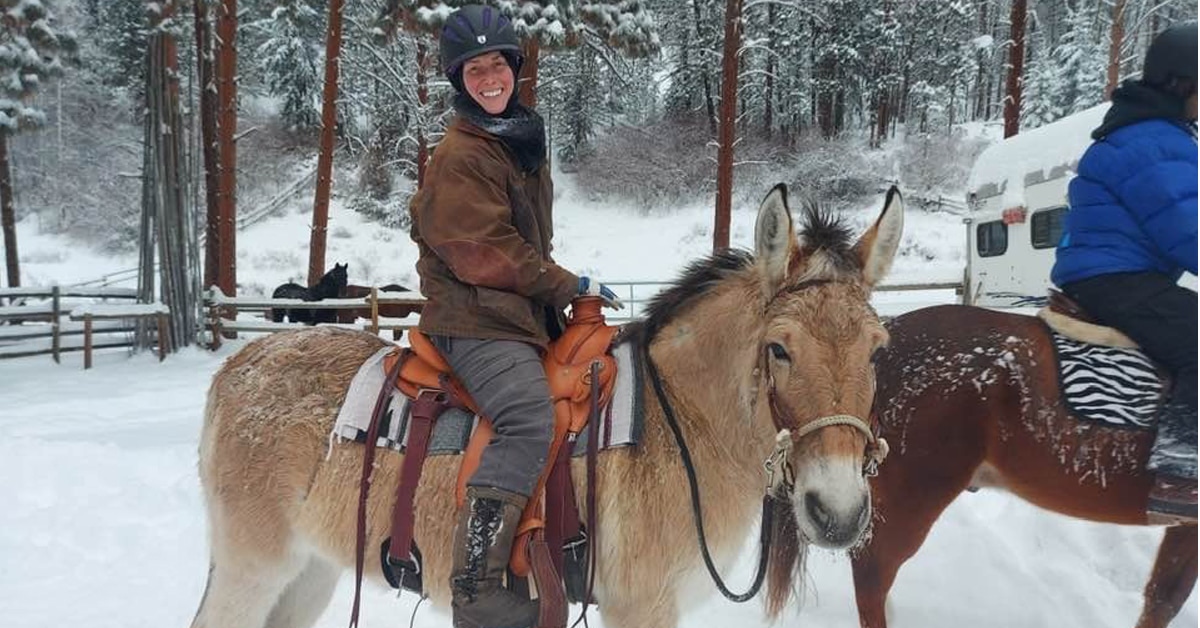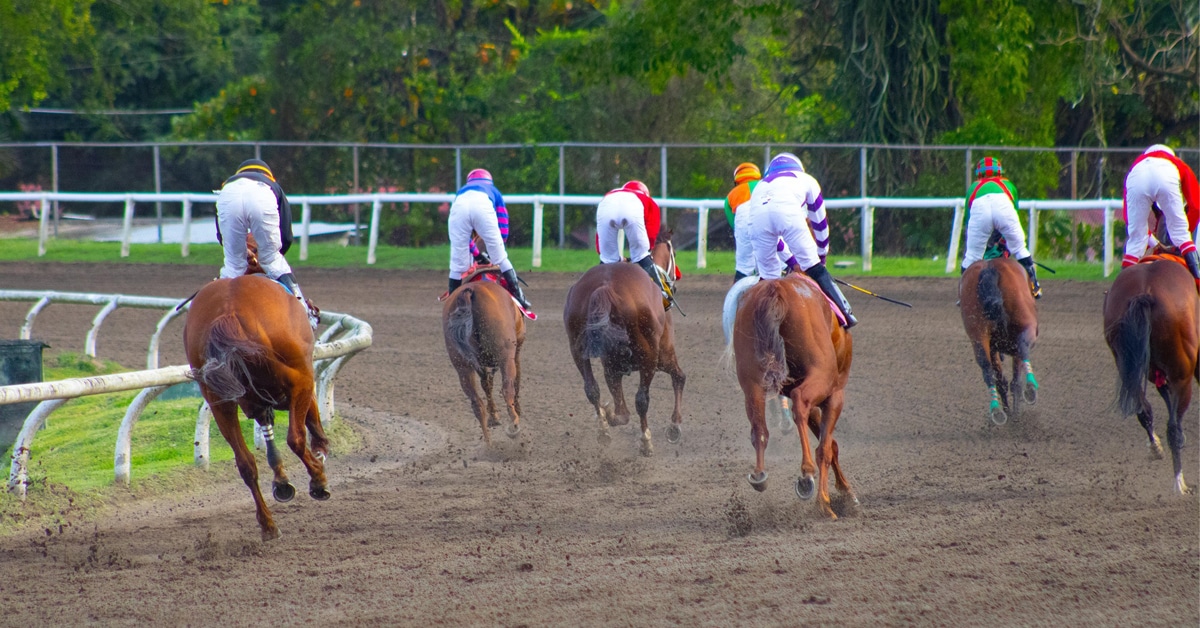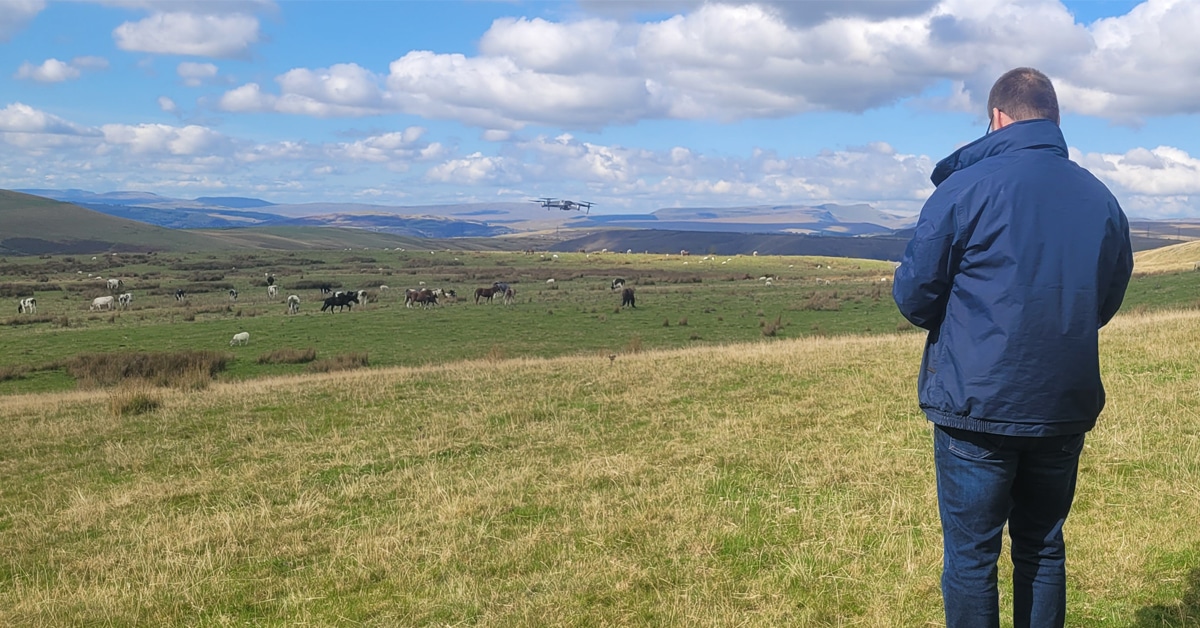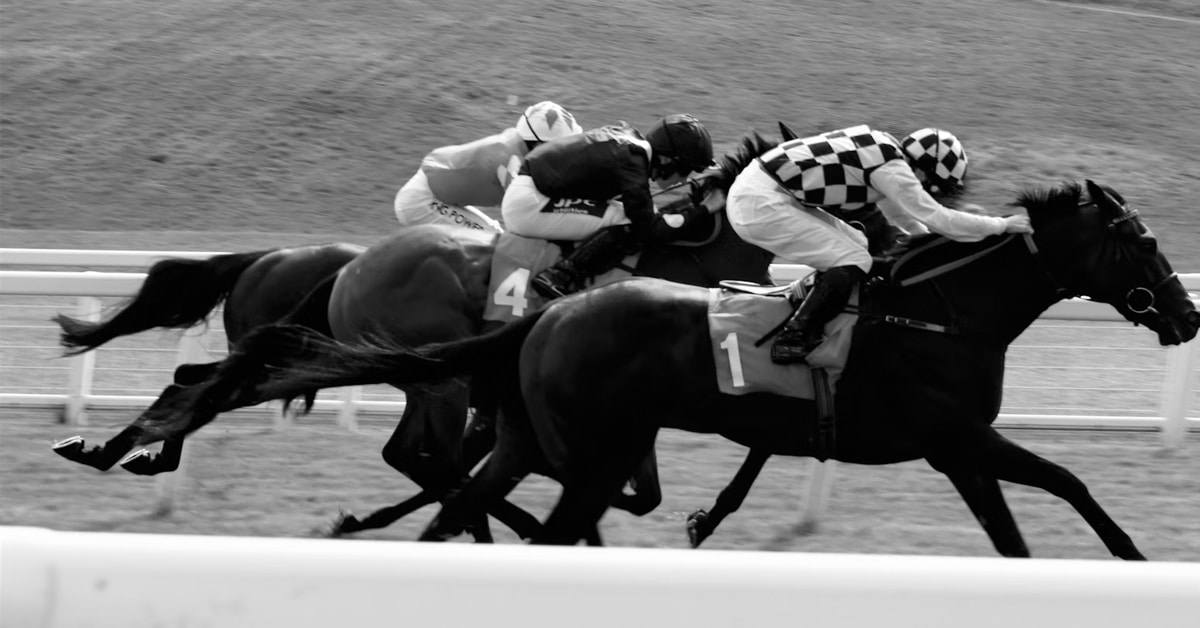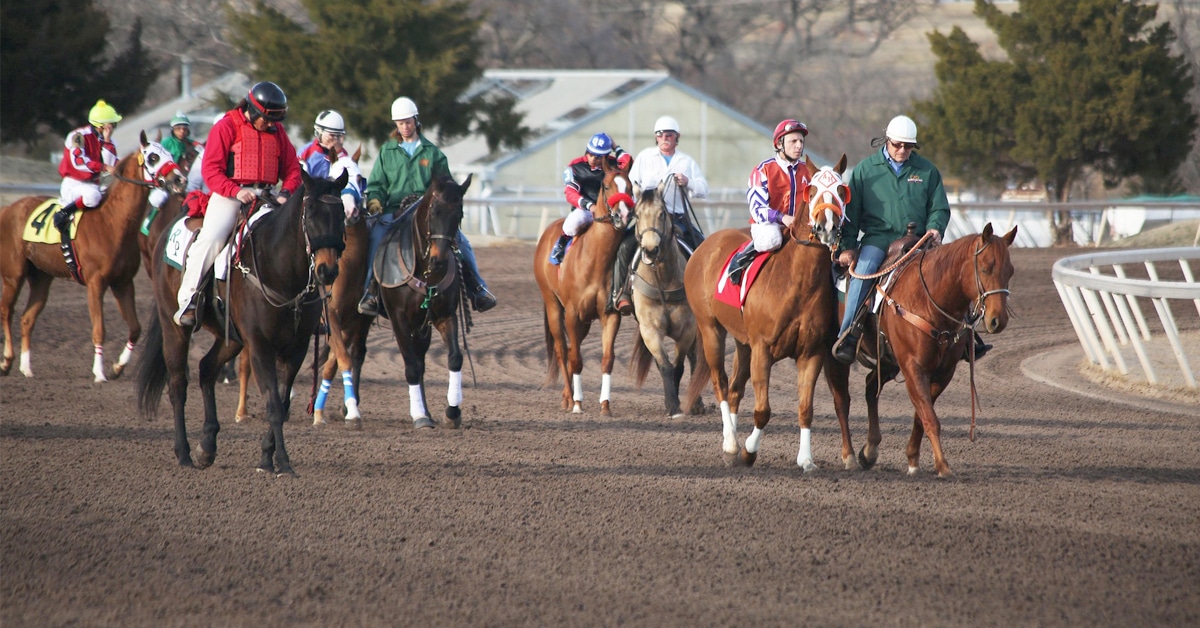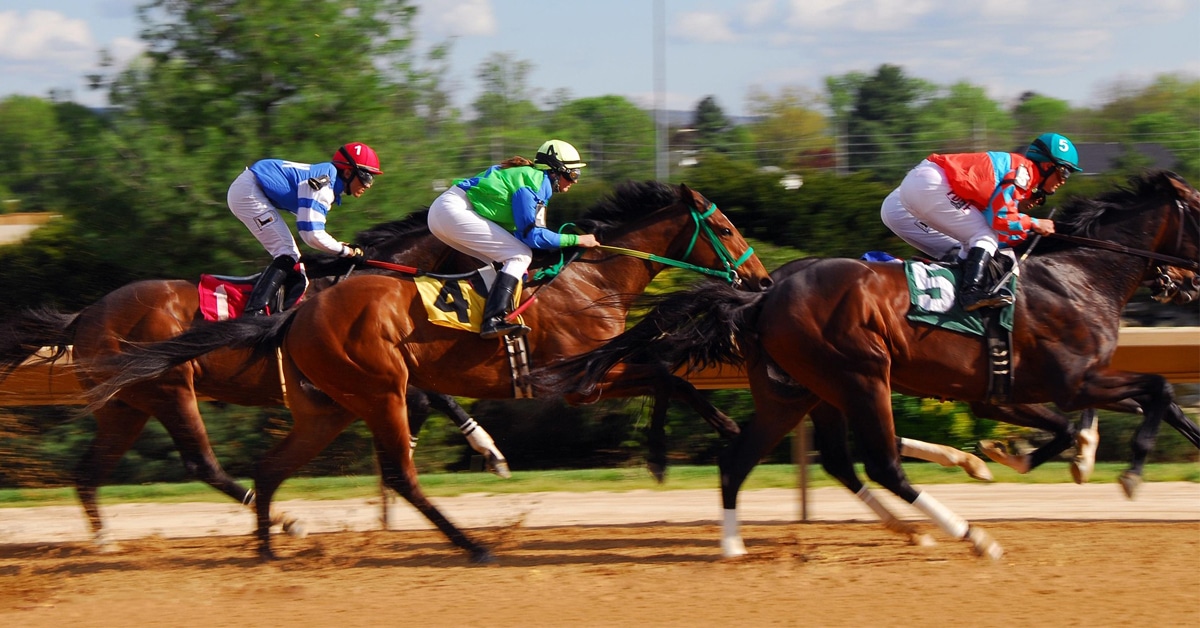The reality is that regardless of how relaxing trail riding sounds, most of us have at least one harrowing tale we like to share involving time spent away from the arena. Perhaps your story involves an uneventful ride that suddenly turned into a frenzied, unstoppable race for home. You may also vividly remember the details of your horse spooking four feet sideways as you tried to ride through a puddle.
Regardless of the experiences you’ve had, it is not uncommon to be a little apprehensive about heading out onto the trail. In order to become more confident, you will need to make sure that you have your horse’s attention whenever you need it most.
In the last issue we discussed exercises to develop a softer, more responsive horse. In this article, Josh Nichol builds on those principles and shares more techniques that will help prepare you and your horse for some quality time both at home and away.
The Proper Frame of Mind
Some horses appear to have been born for the trail; they remain calm in almost every scenario and are perfectly content to follow their riders just about anywhere. Other horses have an extremely heightened awareness of their surroundings and tend to be more difficult to manage when thrown into new environments. Does this mean that only so-called trail horses should venture very far onto the trail?
“Absolutely not,” says Nichol. “What it means is that you have a greater responsibility to maintain a leadership connection with your horse and satisfy his mental needs.
“Our job is to help our horses understand that we are reliable leaders because every horse’s ultimate question is: Who is taking care of the world?,” says Nichol. “To successfully answer this valid question, we must be able to use pressure to direct and then change our horse’s thoughts, rather then just move his body. A good trail ride happens when your horse is free to enjoy the world and does not have to worry about the uncertainties in it.”
The best place to start earning your horse’s undivided attention is from the ground.
Working the Mind at Liberty
One of the best ways to keep your horse focused in new environments is to create a variety of distractions at home.
“I don’t believe in sacking a horse out and desensitizing him to every scary object you can get your hands on,” explains Nichol. “I believe the best approach is teaching a horse that you take care of everything that is going on around him and his only job is to focus on you.”
According to Nichol, ninety-five percent of anxiety in horses is due to brain and body separation.
“The body always wants to be wherever the mind is. For example, when you’re heading back to the barn and your horse is in a hurry, it’s because his mind never left the barn!”
The solution is to consistently call the mind and develop the skills to have your partner focus uniquely on you. One of the best places to begin teaching this key principle is in a round pen or any confined area you might have available such as a small paddock. As you may remember from past articles in this series, Nichol also uses a flag – a two to three foot stick, like a crop, with a plastic bag attached to it – to draw the horse’s attention.
The point of this first exercise is to keep the horse’s mind inside the pen and focused on you.
Stand in the middle of the round pen with your horse loose and free of any halter or rope. Observe your horse at this point. Is he calling out to his herd mates? Is he pacing along the rail or is he simply standing quietly, looking at you?
“What I like to do is set up distractions outside of the round pen in order to gauge the amount of importance the horse places on me,” says Nichol. “The further up I am on this scale, the fewer problems we’re likely to run into.”
If your horse is already entirely focused on you then you will want to improvise some distractions that will entice him to focus outside the pen. The idea is to create a variety of diversions at home so that you are well prepared for whatever you might encounter on the trail.
“The challenge in working a horse’s mind is to be able to change what he is thinking and then redirect his thoughts,” says Nichol.
While standing in the middle of the round pen, pressure any thoughts that do not involve you by shaking the flag as much as necessary but as little as possible. For example, if your horse is pacing the rail and looking out towards his buddies, think and intend for him to turn in towards you while you shake your flag as a pressure that calls for his attention.
“Be careful not to use too much pressure,” says Nichol. “You are not trying to scare or chase your horse, but rather change his thought. It’s a mental connection that you’re after.”
The moment your horse turns in towards you, or even thinks of focusing on you, immediately stop shaking the flag and take a few steps back.
“At first, all I do is apply a small amount of pressure until the horse starts thinking of something different,” says Nichol. “Whenever the horse’s mind shows any sign of coming back into the round pen, whether it be sniffing the sand or looking towards me for even a brief moment, then I immediately release the pressure.
“It’s important to release in as many ways as possible. I take the pressure of the flag away as well as that of my presence, which is why I step away.”
The idea is to use every opportunity to teach your horse that when he stays mentally attentive to you, all pressure goes away.
“I always want the horse to feel successful at controlling the pressure,” says Nichol. “I want him to understand that the release comes whenever he makes an attempt to change his thought and is considering thinking about me.”
It is also important to remember that good training means pointing a horse in the right direction and helping him figure out the answer. “It’s best to release on one small change rather than wait for perfection,” says Nichol.
Soon, you will notice a remarkable improvement in your horse’s state of mind, whether you are standing next to him or are sitting in the saddle.
Keeping your Horse’s Focus with the Lead-Rope
For the next exercise, slip on your horse’s halter and attach it to a lead-rope that is approximately twelve feet long. Have your horse stand facing you while you also face him.
Just as before, the goal here is to have your horse remain focused on you despite any outside distractions. The moment your horse turns his head and looks away, bump the lead-rope to get him to turn back towards you. The idea is to interrupt your horse’s thought as soon as the mind retreats from you.
“Ideally, you should strive to match the effort he puts into focusing on other things,” says Nichol. For example, if he simply turns his head, a gentle nudge of the lead-rope will suffice. If your horse completely turns away from you, however, instantly step to his hindquarters and sharply bump the lead-rope in towards you so that his entire body turns back and faces you.
“It’s important to refrain from bumping the lead-rope every time your horse’s eyes simply look away,” adds Nichol. Discouraging your horse’s curious nature quickly turns into nagging and only sets him up to fail.
“The horse needs to be encouraged to try,” says Nichol. “If all he ever hears from you is “no” and “don’t do that” then he will never learn how to succeed.”
Repeat this exercise often and try it in as many different settings as you can. It is an excellent way to gauge the progress you’re making.
Transitioning to the Saddle
The next step is to transition these exercises into the saddle. Although things often feel different when you’re sitting on your horse, remember that everything remains exactly the same. In fact, working towards the trail is nothing more than a progression of the groundwork we have just discussed.
As mentioned in the last article, Nichol recommends the use of a sidepull rather than a bit and bridle to protect your horse’s mouth as you develop better feel. It is also a safer tool as you nudge the reins.
“If you are worried about control, start somewhere you feel safe, like the arena or round pen, and develop these skills until you no longer fear being in a wide open space,” says Nichol.
Begin by riding towards whatever you feel will distract your horse. For the purpose of this article we’ll say that you are riding on a left rein and your horse’s attention is diverted by something to the right. As soon as you lose your horse’s focus, immediately nudge the left rein just as you did earlier with the lead-rope.
“Bump the rein with progressively more energy until your horse’s mind re-engages with you,” says Nichol. “Keep your hands tension-free and nudge fluidly. Release the moment you regain your horse’s mental focus.
“Remember, there is a difference between your horse looking at something and mentally leaving you,” says Nichol. “The trail should be a place where both you and your horse are able to decompress. Attend to the leadership issues but allow your horse relax and look around as well.”
Keep in mind that insensitive hands can easily set up pulling matches out on the trail. Nudging should never be about pulling.
“Think of a gentle pulse that you’re sending down the rein,” says Nichol. “Try to be as soft and responsive in your hands and body as you would like your horse to be.”
Just as you did on the ground, confidently match your horse’s effort when his mind leaves you. “If your horse only turns his head away or simply calls for his friend then a nudge or two is probably all you need,” says Nichol. “If, however, you feel anxiety bubbling up through your horse’s body as his mind drifts elsewhere, you will have to be more deliberate in your attempts to recall his focus.”
The technique Nichol uses in such cases is what he calls “mental self-carriage.” First, reach along one rein and draw your horse’s head in towards you. Then, hold the rein as you would the hand of a dance partner and wait to see if your horse will mentally wait on you. If he does, release the rein. If his thought flees again, start over.
“Do this until the mind will wait without being held,” says Nichol. “Your horse should stop moving his feet and you will feel his focus return to you. This exercise is especially helpful to centre a horse that is easily distracted.”
Proper training is merely a progression of logical steps. As such, the exercises outlined in this article merely build on one another. Practice them in as many different settings as you can until you feel confident that you can regain your horse’s focus in any situation.
As you train, your horse will develop greater trust in your ability to take care of his worries. Take these principles with you on the trail and one of your new prized stories will be about a relaxing, uneventful ride that proved to be the ideal mental break both you and your horse were longing for. Happy trails!
Josh Nichol is a trainer and clinician based in Western Canada who specializes in developing softness in horses and their riders. For more information on Josh Nichol’s training methods and his 2010 clinic schedule, go to www.joshnichol.com.
The Latest
